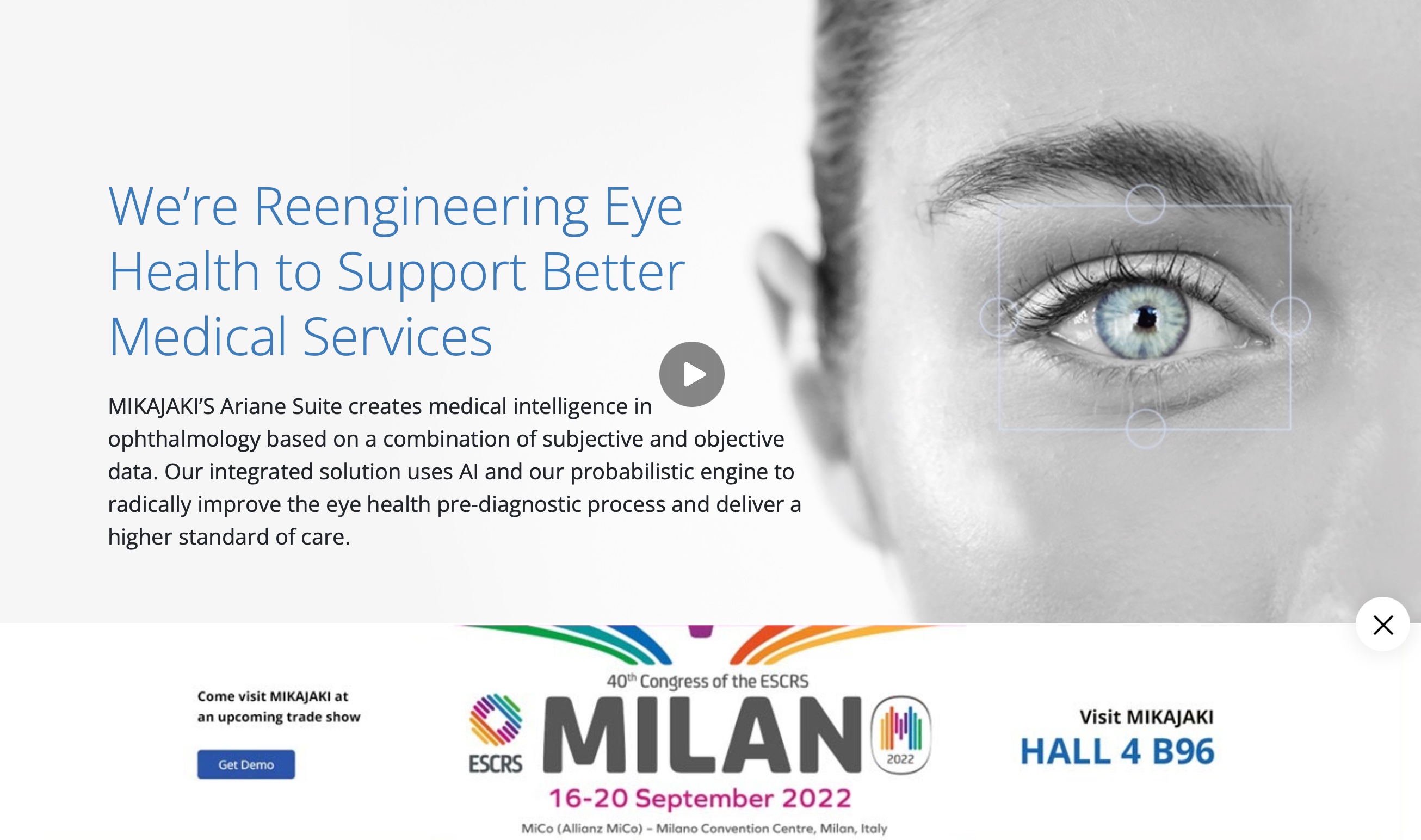Hi Yann,
You are the CEO of the Start-Up MIKAJAKI. With your Eyelib system (Fig. 1) you want to revolutionize diagnostics and especially imaging-based diagnostics in ophthalmology. What exactly can Eyelib do?
Hi Sebastian,
To solve the shortage of eye care professionals, MIKAJAKI re-engineered eye healthcare by empowering digital, robotics & artificial intelligence revolutions in the EyeLib™
Under a unique process MIKAJAKI provides an exhaustive ophthalmic platform to support MD diagnostics based on a combination of subjective and objective data.
It enables digital health using top robotic solutions, artificial intelligence, image processing and sophisticated algorithms to deliver rapid, fully autonomous, accurate and scalable eye exams.
The EyeLib will be the crucial device to enable efficient telemedicine. It will facilitate the new low contact necessity to adapt to our new reality of the post COVID-19 era.
Sounds great! What imaging technologies does Eyelib implement? Can your system keep up with high-quality individual devices?
EyeLib uses existing technologies and operated them on a mechatronic modular distribution table to operate them as autonomous as possible. This setup permits to keep always the best and latest technology in our solution. Curenlty we provide:
- Wavefront focimeter measurement
- Anterior segment analyzer: Refractometer, image of the eye, slit of the cornea with anterior segment spectral-domain OCT, keratometer, corneal topographer, aberrometer, retro-illumination, Scheimpflug imaging, pachymeter, epithelial map. non-contact tonometer and biometry.
- Posterior segment analyzer: non-mydriatic camera, posterior OCT (with RGCL, Macula and RNFL)
We are in process of validating with AI auto analysis of each one of those measurements, anticipation of subjective refraction, IOL suggestion, surgery recommendation, Keratoconus, Cataract, Retinal Detachment and Glaucoma screening.

Figure 1: The EyeLib system is a fully automated, multimodal imaging system that combines various imaging capabilities for ophthalmic diagnosis. These include anterior and posterior segment OCT, Scheimflug technology imaging, a fundus camera and an anterior slit lamp.
What is your target audience? A system that includes so many imaging modalities must be very expensive. Should Eyelib make the life of every ophthalmologist easier, or rather be used complementary, e.g. in larger clinics?
MIKAJAKI will first target eye centers to generate revenues through “B to B” one-time sales and highly profitable recurring pay-per-use fees and 3rd party services.
Once its solution is established as a standard of care, MIKAJAKI’S will offer a more direct patient access though diversified channels to become a leading “B to C” eye healthcare intelligence provider.
Is the use of Eyelib also telemedicine-ready?
Yes, it can be operated by a technician and the medical professional can review the SmartVision® Report and set a teleconsultation to provide the diagnostic and treatment to the patient.
What are the technical limitations of Eyelib? Does Eyelib still need medical assistants, or is a completely automated and autonomous examination of patients possible?
EyeLib still requires human assistance to be able to process all the type of patients and per most of the countries reglementary requirement. It permits to reduce the level of the technician and provide higher medical service.
It is often noted that automated systems, while capable of automatically applying the imaging or examination techniques they can perform, cannot use them in a resource-efficient and targeted manner because they have not implemented a medical history system based on physician experience. How do you plan to solve this problem?
EyeLib uses existing technologies that are already proven as top technologies and adopted by the medical community. The devices are already certified by the regulatory authorities.
Ophthalmologists are always criticizing start-ups like you for not wanting to relieve ophthalmologists, but rather replace them. What can you say in response? Will we be superfluous in a few years?
According to the WHO there will be a shortage of 1 million eye healthcare professionals by 2025 to meet the minimum standards. We want to empower the ophthalmologist not replace them. We provide the 3 O market a more efficient process with a better medical service for their clinics. Patient will be referred to the relevant professional that can treat them. Doctor can focus on surgery, diagnostic and actions that cannot be done by paramedical staff or machines.
Thanks a lot for the talk, Yann!
Further Information
Visit their Booth at the ESCRS 2022 in Hall 4 B96




